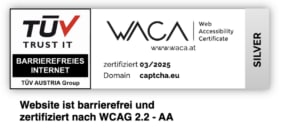
Online advertising offers businesses powerful ways to connect with audiences, but it also opens the door to manipulation. One of the biggest threats in the digital advertising space is ad fraud — a silent drain on marketing budgets, performance data, and business growth. This hidden problem steals from advertisers by generating fake engagement, impressions, or conversions that never involve a real person. The financial toll is staggering, with billions of dollars lost annually to these deceptive practices.
Let’s explore what ad fraud is, how it works, the forms it takes, and most importantly—how you can fight back.
Table of contents
Defining Ad Fraud
Ad fraud occurs when digital advertising metrics—such as clicks, impressions, or installs—are manipulated or faked to generate income for fraudsters. These false interactions are typically created by bots, malware, or even organized human activities like click farms. The result? Advertisers end up paying for engagement that never came from a real, interested user. This not only drains advertising budgets but also leads to misleading analytics that hinder strategic decision-making.
Types of Ad Fraud (And How They Work)
Ad fraud comes in many shapes, each exploiting different vulnerabilities in the digital advertising ecosystem. Here are the most prominent tactics:
Click Fraud
Click fraud targets pay-per-click (PPC) campaigns by generating fake clicks. This can be done using bots that simulate user behavior or through click farms—operations where individuals are paid to click on ads manually. In competitive markets, malicious actors might use this method to drain rivals’ budgets and make their own ads more visible.
Impression Fraud
This form of fraud affects CPM (cost per thousand impressions) models. Fraudsters artificially inflate ad views, often using tricks like ad stacking (placing multiple ads on top of one another) or pixel stuffing (shrinking ads to invisible sizes). The ad registers as “served,” but no real person ever sees it.
Domain Spoofing & Hacking
In more sophisticated cases, fraudsters hijack legitimate websites’ identities through domain spoofing. Advertisers believe their ads appear on premium, trusted sites when they’re actually shown on low-quality or irrelevant ones. Additionally, attackers may tamper with ads.txt files—a protocol meant to verify authorized sellers of ad inventory—and redirect ad dollars to unauthorized or fake entities.
Mobile and App-Based Fraud
Mobile ad fraud is increasingly common. Techniques include:
- Click Injection: A malicious app detects when another app is being installed and injects a fake click to claim credit for the install.
- Click Spamming: A barrage of fake background clicks from a user’s device gives the illusion of engagement.
- Install Farms: Devices are programmed to mimic real users by installing and interacting with apps, deceiving advertisers into believing in false traction.
Hidden Ads and Ad Injection
Some publishers manipulate websites to serve ads invisibly or inject them into pages users never expected. These might include overlays, unauthorized pop-ups, or embedded ads that don’t serve any real user experience.
Geo-Masking and User Agent Spoofing
By disguising user locations or mimicking browsers, fraudsters make it seem like traffic is coming from high-value regions or devices, inflating the perceived quality of ad impressions.
The Real Cost of Ad Fraud
Ad fraud is more than just an accounting issue—it directly affects business performance. Advertisers lose money without gaining any real engagement, which in turn distorts campaign metrics and makes optimization nearly impossible. A campaign may appear successful on paper while delivering no actual results. Worse still, ads may appear on inappropriate or suspicious websites, damaging brand reputation.
Legitimate publishers also suffer. When fraudulent activity is associated with their traffic—even unintentionally—they may see reduced ad bookings or face penalties from ad networks. For users, the consequences often appear in the form of slower sites, intrusive ads, or even malicious redirects and malware.
How to Spot Ad Fraud
Spotting ad fraud requires attention to subtle inconsistencies across your campaigns. Start by keeping a close eye on campaign metrics. If you’re noticing sudden spikes in traffic without any matching increase in conversions, that’s a red flag. The same goes for abnormally high click-through rates paired with low engagement, or a lot of traffic coming from regions you aren’t targeting. You might also see very short session durations or unusually high bounce rates, especially from ads that should lead to engaging content.
Suspicious behavior patterns—like repetitive user interactions or activity at strange hours—can also hint at automation. And if infrastructure costs or page load times are increasing without a clear reason, bots may be overwhelming your servers. Compare current behavior with historical performance regularly, and trust your gut when the numbers seem too good—or too strange—to be true.
How to Prevent Ad Fraud
Protecting your ad spend requires a multi-faceted approach. First and foremost, working with reputable ad networks that offer transparent reporting and robust fraud protection measures is essential. These platforms often integrate machine learning systems capable of identifying irregular patterns that signal fraud.
Bot detection tools, particularly those backed by AI, can monitor user behavior in real time. CAPTCHAs, like those from captcha.eu, play a valuable role here. They offer a privacy-compliant, user-friendly barrier that prevents automated bots from skewing engagement metrics, especially when deployed across multiple points of interaction on your website.
Regular analysis of your campaign data also helps. Monitor for discrepancies between impressions and conversions, or traffic sources that deviate from expected demographics. Use ad verification systems to ensure your ads appear where and how they should and consider using blocklists or allowlists to control where your ads run.
Geo-verification tools help prevent geo-masking, while advanced filters in ad platforms can reject traffic flagged as invalid. Implementing ads.txt and sellers.json ensures transparency in the supply chain, making it harder for fraudsters to pose as legitimate sellers.
On your own website, you can take further action by securing user interactions with tools like captcha.eu, which defend against automated form submissions, login abuse, and fake registrations. This not only blocks bots but also helps keep your analytics data clean and actionable.
Conclusion: How To Win The Fight Against Ad Fraud
Ad fraud is a persistent and evolving challenge that undermines the value of digital advertising. It steals budgets, distorts data, and erodes trust between advertisers, publishers, and users. But with awareness, smart tools, and the right partnerships, businesses can take back control.
The fight against fraud doesn’t end with your campaigns—it includes protecting your own digital assets as well. Fraudsters often target your website to generate fake impressions or clicks, and if you’re a publisher, that could result in invalid traffic penalties. One simple but powerful solution is implementing a user-friendly CAPTCHA system like captcha.eu. It helps distinguish real users from bots without disrupting the user experience and ensures that forms, logins, and other sensitive entry points remain protected. As a GDPR-compliant tool, it also respects user privacy while keeping your digital environment clean and secure.
Combating ad fraud takes a collective effort—from marketers and developers to ad networks and tech providers. It’s not just about saving money; it’s about ensuring that your message reaches real people, builds real relationships, and drives real results. And in that mission, vigilance is your greatest ally.
100 free requests
You have the opportunity to test and try our product with 100 free requests.
If you have any questions
Contact us
Our support team is available to assist you.




